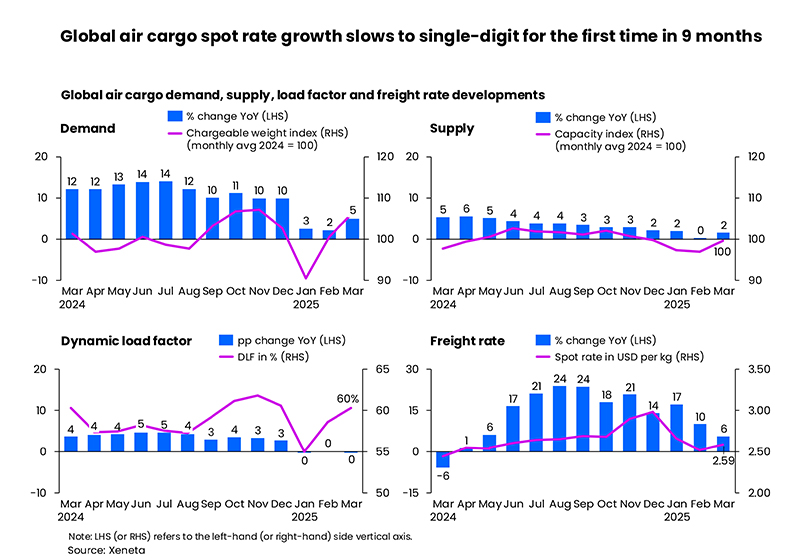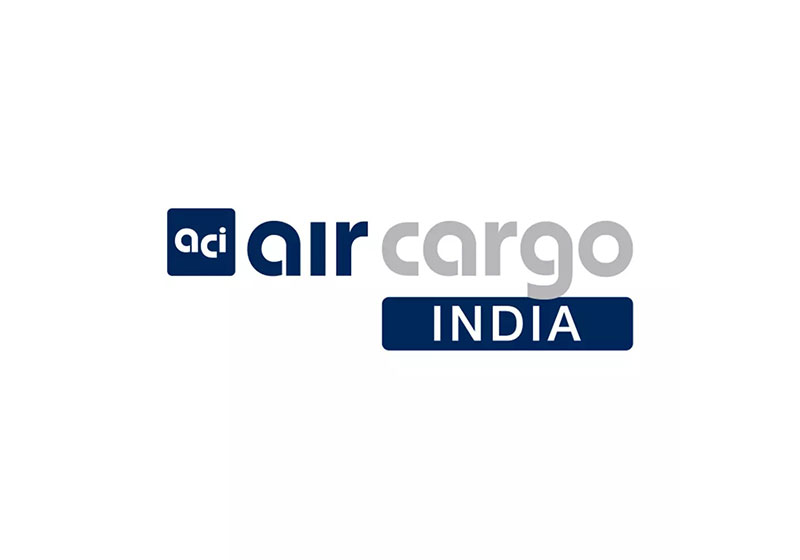E-commerce volumes, for so long the saviour of global air cargo demand, are today facing up to the ‘seismic shock’ of the United States’ ‘Liberation Day’ global tariffs announcement, while the general cargo market is also reevaluating its future as shippers, forwarders, airlines, and consumers come to terms with the economic reality of new import taxes and a potential international trade war.
US President, Donald Trump, yesterday confirmed the elimination of duty–free de minimis treatment for low-value imports from China and Hong Kong, starting 2 May 2025. All relevant postal items valued at or under USD 800 previously qualifying for the de minimis exemption will become subject to a duty rate of either 30% of their value or USD 25 per item (increasing to USD 50 per item after 1 June 2025).
Already reeling from the potential impact of the US’ actions, global air cargo demand is likely to suffer further harm from retaliatory actions by other countries. EU President, Ursula von der Leyen, called the US decision “a major blow for the world economy.”
After more than a year of double-digit growth, air cargo now faces an uncertain future, said Xeneta’s Chief Airfreight Officer, Niall van de Wouw.
“E-commerce has been the main driver behind air cargo demand. If you suddenly and dramatically remove the oxygen from that demand, it will cause a seismic shock to the market," he added.
Cross-border e-commerce has evolved as the major driver for global air cargo demand growth in recent years. China-to-US e-commerce shipments alone account for roughly half of the cargo capacity on this eastbound corridor and around 6% of global air freight demand. A disruption to this demand will free up a significant part of this corridor’s cargo capacity and spread its impact to the rest of the market, van de Wouw said.
New air cargo market data for March clearly indicated shippers and forwarders were ‘hedging their bets’ and buying time before making longer-term commitments to air cargo capacity as they waited to see how the impact of newly-imposed tariffs and international trade tensions unfolded. March showed no drastic signs of panic as demand rose +5% year-on-year against a strong comparison 12 months ago.
The economic fallout following yesterday’s events is now likely to place further pressure on airfreight rates. Global air cargo spot rates in March continued their levelling out trend seen over the past year, increasing at their lowest pace since June 2024 at +6% year-on-year.
Given the tumultuous market uncertainties, the latest air cargo market data reflected the cautious ‘wait and see’ approach being adopted by industry stakeholders. Shippers negotiating contracts in Q1 2025 preferred shorter-term agreements of 3 months or less, representing 79% of contracts - an increase of nearly 20 percentage points year-on-year. Meanwhile, freight forwarders continue to place approximately 45% of their volumes in the spot market.
“With the growth of rates slowing overall, we’d normally expect to see shippers making longer capacity commitments to achieve more competitive rates, but, right now, this is clearly a gamble few shippers are ready to take – and this is before we’re even seeing tariffs impacting volumes,” said Niall van de Wouw, Xeneta’s Chief Airfreight Officer.





